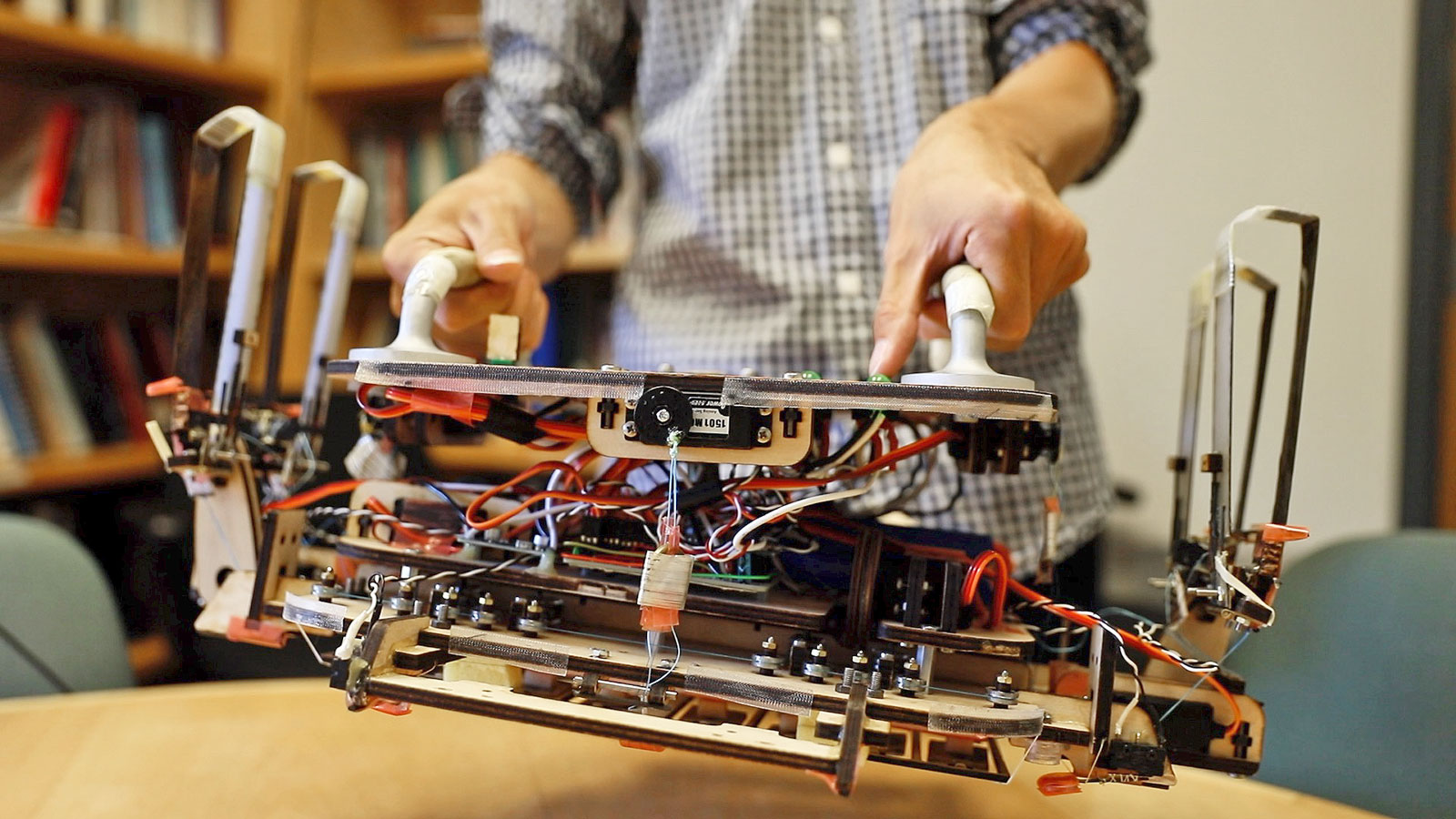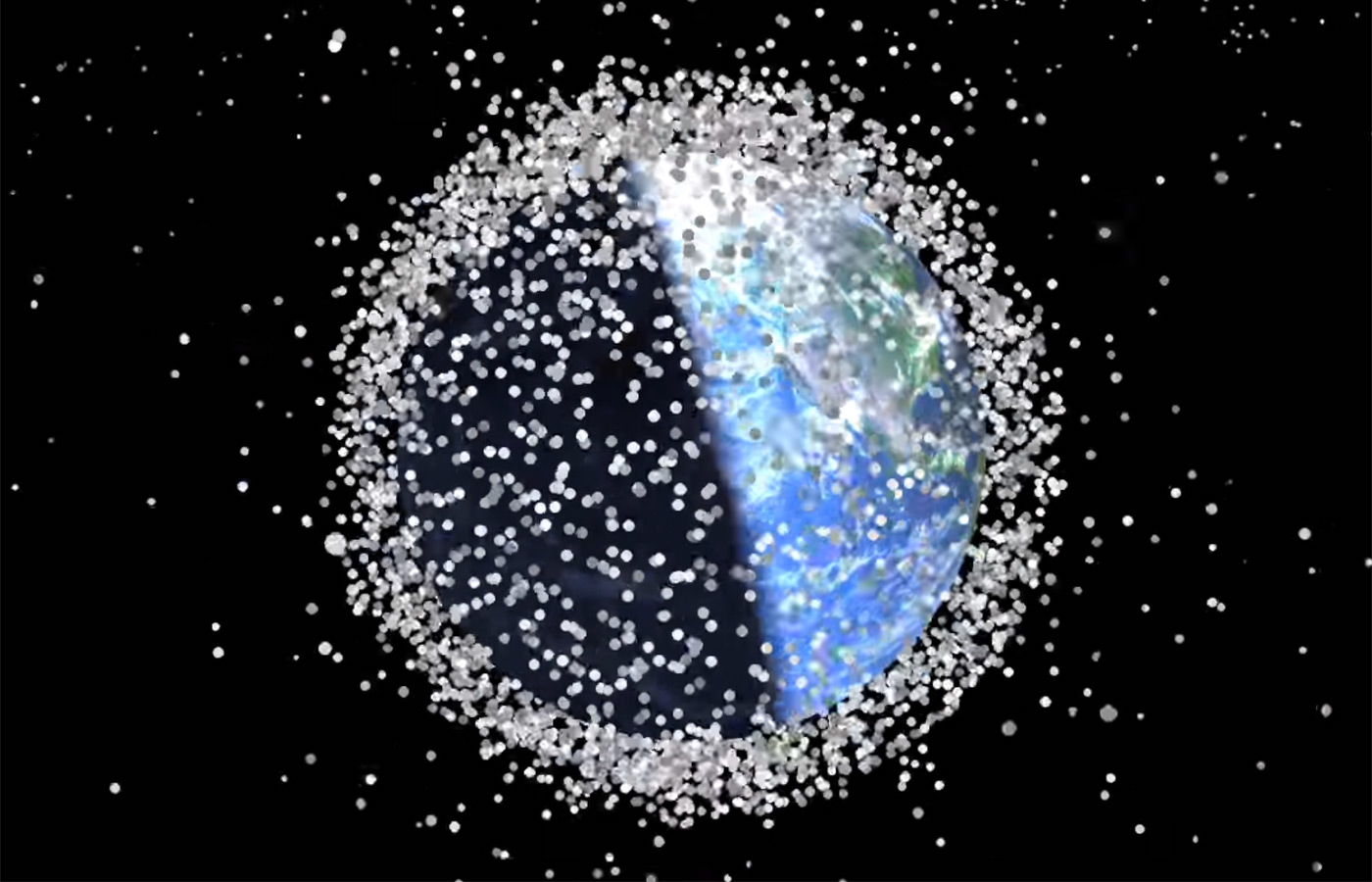
Sure, we can pull space junk out of orbit with lasers or use it to cobble together new satellites, but if engineers at space firm Astrium UK have their way, space trash could be disposed of with the help of harpoons. Currently in a conceptual stage, the system is designed to shoot defunct satellites or other debris with a harpoon mounted on a "chaser satellite" and use a tethered propulsion pack to send the rubbish in an atmospheric descent where it'll burn up. Since the projectile could shoot straight through targets and result in even more garbage, it's been fashioned with a crushable portion to reduce its speed upon impact. There's no concrete word on when the outfit's solution might be put in action, but they'll present their work on Wednesday at the 63rd International Astronautical Congress in Naples (Italy, not Florida, mind you). If you can't wait to see the harpoon at work, head past the break to catch tests of an Earth-based prototype.
Continue reading UK engineers developing harpoon that could help space junk meet a fiery end
Filed under: Science, Alt
UK engineers developing harpoon that could help space junk meet a fiery end originally appeared on Engadget on Mon, 08 Oct 2012 05:21:00 EDT. Please see our terms for use of feeds.
Permalink  Ars Technica
Ars Technica |
 BBC
BBC |
Email this |
Comments
 There have been more than a few proposals for eliminating space junk, such as grabbing it, gobbling it and blasting it from Earth. The latest idea, however, may be the most dramatic... and the most effective. Chinese researchers have successfully s...
There have been more than a few proposals for eliminating space junk, such as grabbing it, gobbling it and blasting it from Earth. The latest idea, however, may be the most dramatic... and the most effective. Chinese researchers have successfully s...
 There have been more than a few proposals for eliminating space junk, such as grabbing it, gobbling it and blasting it from Earth. The latest idea, however, may be the most dramatic... and the most effective. Chinese researchers have successfully s...
There have been more than a few proposals for eliminating space junk, such as grabbing it, gobbling it and blasting it from Earth. The latest idea, however, may be the most dramatic... and the most effective. Chinese researchers have successfully s...
 Space junk is a huge problem in orbit. Over 500,000 pieces of debris are currently orbiting the Earth at up to 17,500 miles per hour, and we haven't yet figured out how to clean it up. But engineers at Stanford may have made a breakthrough: They've d...
Space junk is a huge problem in orbit. Over 500,000 pieces of debris are currently orbiting the Earth at up to 17,500 miles per hour, and we haven't yet figured out how to clean it up. But engineers at Stanford may have made a breakthrough: They've d...
 Today on In Case You Missed It: The US Air Force is moving its Space Surveillance Telescope to Australia to track space junk littering geosynchronous orbit. That's the orbit 22,000 miles away from our planet where satellites mirror the Earth's ro...
Today on In Case You Missed It: The US Air Force is moving its Space Surveillance Telescope to Australia to track space junk littering geosynchronous orbit. That's the orbit 22,000 miles away from our planet where satellites mirror the Earth's ro...
 Today on In Case You Missed It: DARPA's own AAA satellite service to service satellites orbiting Earth could launch in about five years, if all the testing goes as planned. A new drone is based on the form of a bat and the resemblance is uncanny. A...
Today on In Case You Missed It: DARPA's own AAA satellite service to service satellites orbiting Earth could launch in about five years, if all the testing goes as planned. A new drone is based on the form of a bat and the resemblance is uncanny. A...
 You probably know that the proliferation of space junk is a real problem, but we won't blame you if you have a tough time wrapping your head around the concept. There are roughly 20,000 fragments up there, after all. However, university lecturer Stua...
You probably know that the proliferation of space junk is a real problem, but we won't blame you if you have a tough time wrapping your head around the concept. There are roughly 20,000 fragments up there, after all. However, university lecturer Stua...
 It turns out that the sky is full of space debris, which poses a threat to craft and satellites orbiting Earth. A team of scientists at Tsinghua University in Beijing, China have come up with a way to remedy this. They've developed a spacecraft that...
It turns out that the sky is full of space debris, which poses a threat to craft and satellites orbiting Earth. A team of scientists at Tsinghua University in Beijing, China have come up with a way to remedy this. They've developed a spacecraft that...





